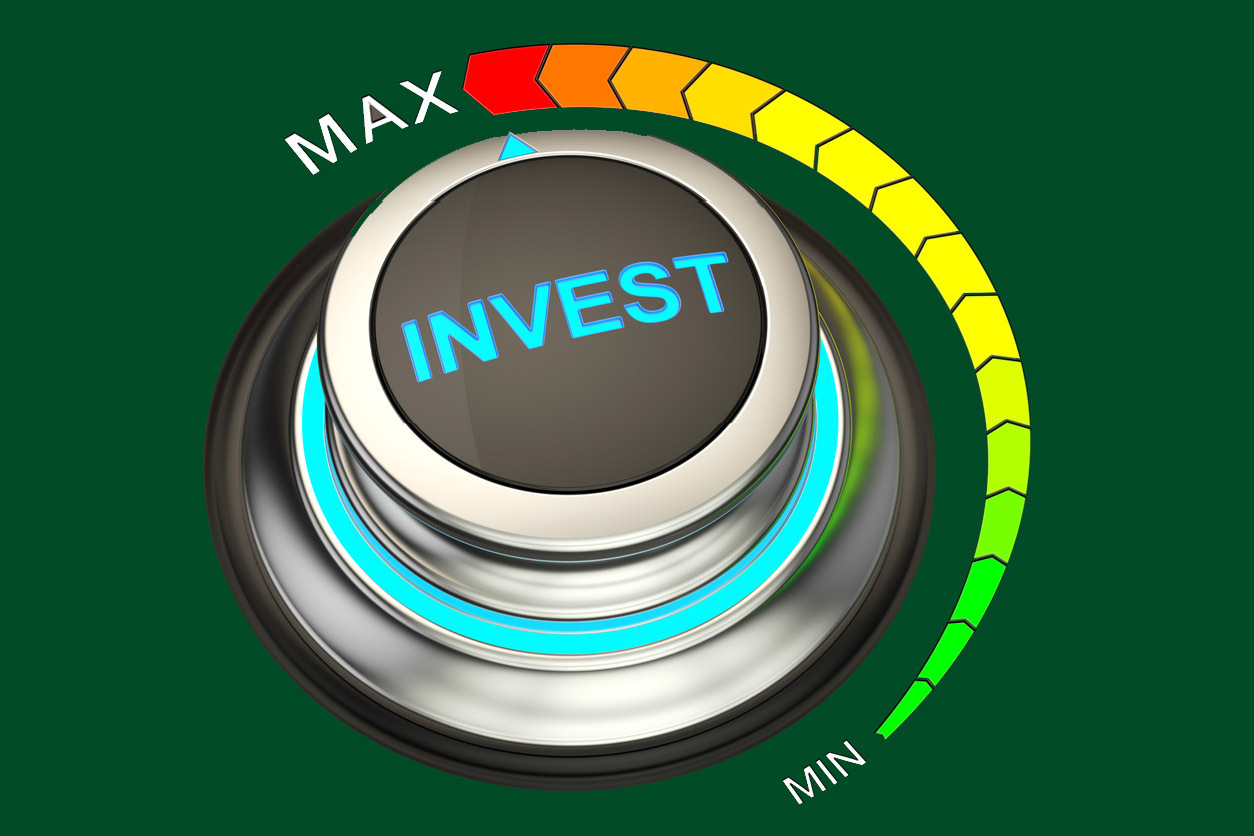Expert investment tips from £50 to £50,000
There’s no time like the present to get your money working harder.
23rd February 2022 10:40
by Faith Glasgow from interactive investor
There’s no time like the present to get your money working harder, and the good news is that you don’t actually need large lump sums to make a start. See how these experts would allocate the cash.

Keeping your cash in a bank account might be the safest option in the short term, but it will never make that money work and grow. Worse still, the real value of bank savings is being ravaged by inflation already at well over 5% and forecast to top 7% later this spring.
Investing in the stock market is a more up-and-down experience in the short term, so it’s no good for short-term goals such as a house extension or imminent university fees. Basically, don’t invest if you won’t be able to leave the money untouched for several years, ideally at least five.
- Read about our: Top Investment Funds | ii Super 60 Investments | Transferring an Investment Account
But if you’re able to do that, and you have built up a decent cash emergency fund to cover unforeseen expenditure, then stocks and shares are where you’re likely to see the best returns.
And the good news is that you don’t actually need large lump sums to make a start.
- Low-cost investments to help get you started – all chosen by our experts
- Want to learn more about the world of investing? Visit our Knowledge Centre
- Top 10 things you need to know about holding cash versus investing
It can be a daunting prospect to dip that first toe in the water, though, so to help beginner investors we’ve put together four different investment scenarios and asked some experts from within and beyond interactive investor how and where they would allocate the cash.
Regular investing £50 a month
You may not have much spare cash, but setting up a direct debit payment into a regular investment at the start of the month is a great place to begin your investing journey. It’s remarkably painless, and it gets you into a good discipline as an investor.
Moreover, as Becky O’Connor, head of savings and pensions at interactive investor, observes, you can do a lot with £50 a month. “Be prepared to watch it build up slowly, and expect dips as well as rises along the way,” she advises.
“From time to time, for instance when you have a pay rise, review whether you can increase the amount you are contributing regularly.”
One good thing about regular investing is that you benefit from an effect called ‘pound cost averaging’. This is where, when the value of your holdings dips, you ‘buy the dip’ and can purchase more units with your fixed amount, because each unit costs less; conversely, when values are rising your money will buy fewer units.
- An investment glossary: jargon debunked
- Discover our Don't be shy, ask ii questions here
- What is a Stocks & Shares ISA?
The result of this is that over the long term, you don’t overpay for your holdings, and you avoid the risk of putting all your money into the market just before it falls.
O’Connor warns that it is possible your choice may be restricted when you’re dealing in relatively small amounts: “There may be minimum investment amounts for some investment options, but you can wait until you have built up enough in cash to invest in your chosen fund. Just remember not to leave it in cash if your aim is to have it invested!”
Whatever your choice of funds, you need a simple way to invest on a monthly basis. interactive investor offers a free regular investing service, which means your contributions are automatically invested each month in the fund range of your choosing in your investment account or ISA.
Recommendations
Kyle Caldwell, collectives editor at interactive investor, suggests that a multi-asset fund is a sensible starting point for beginner investors in a regular savings plan.
“Such funds split your money across a mixture of different assets, but mainly invest in shares and bonds. This spread of investments gives investors diversification, which helps to reduce risk,” he says. “Ideally they should use a low-cost fund, because high charges can drag on returns over time.”
interactive investor’s Quick-start Funds range, aimed at beginner investors, endorses six multi-asset funds that the team believes stand out from the crowd.
Caldwell explains: “Three of the funds are actively managed by BMO’s fund managers, and three are passively managed low-cost funds from Vanguard that follow the performance of the market.” The ongoing fund charges are low in both cases: 0.22% a year for the Vanguard funds, and 0.35% a year for the BMO funds.
- Top 10 things you need to know about holding cash versus investing
- Find out your financial personality type
- Active vs Passive
- Funds vs Trusts
Within each group of three, there are three levels of risk and return to suit different investors. The risk/return profile is shaped by the balance of shares to bonds.
“Some are more conservatively invested, with less exposure to shares, so when stock markets fall the fund is better equipped to protect your capital,” adds Caldwell. "The trade-off, however, is that when stock markets rise, they will produce more modest returns.”
Among the Quick-start Funds, Vanguard LifeStrategy 20% Equity and BMO Sustainable Universal MAP Cautiousare designed for more risk-averse investors.
For investors prepared to take a medium level of risk, Vanguard LifeStrategy 60% Equityand BMO Sustainable Universal MAP Balanced fit the bill. Such funds sit in the middle ground between those more cautiously and adventurously positioned.
The two most adventurously positioned funds in the range are Vanguard LifeStrategy 80% Equity and BMO Sustainable Universal MAP Growth. Both funds invest in a manner designed to produce higher returns than the others, but they offer less protection when markets fall.

Regular investing £250 a month
If you’re channeling £250 a month into your investment account, do make sure you’re using your £20,000 ISA allowance, as this will enable your investments to grow free of capital gains and income tax – it may not seem a big deal now, but it is likely to make a big difference over the years.
What should you invest in? You could stick with a cheap multi-asset fund, but the chances are that you may be becoming more familiar with the investment universe and keen to become a bit more involved. If that’s the case, you could broaden your regular investments to include small allocations to another one or two more specific funds – perhaps a regional or environmentally focused fund – alongside your multi-asset holding.
Recommendations
The difficulty, of course, is that there are thousands of funds and investment trusts from which to choose. Again, interactive investor has helped simplify the process with its Super 60 and ACE 40 ethical shortlists of robust, well-managed funds, both passive and actively managed.
These divide the chosen funds into different ‘silos’ (for instance, ‘core’, ‘low-cost’ or ‘adventurous’), so you can identify just what you’re looking for. The funds are regularly reviewed to ensure they continue to perform as they should.
So you might, for instance, want to add an ethical dimension to your multi-asset fund, with a trust such as Impax Environmental Markets (LSE:IEM), or a fund such as Fundsmith Sustainable Equity, both included on the ACE 40 list.
- How to save and invest for a wedding
- Check out our award-winning stocks and shares ISA
- How to invest for…buying your first home
Alternatively, Rory McPherson, head of investment strategy at Punter Southall, has a couple of ideas for different risk profiles.
“Whilst an appropriate investment will be very much dependent on the individual’s particular risk tolerance, I’d highlight the TwentyFour Dynamic Bond fund as being an attractive bond fund for more cautious regular investors to look at. This offers a healthy yield of over 4%, as well as some opportunity for capital growth,” he says.
“At the higher end of the risk spectrum I’d highlight the Crux UK Special Situationsfund run by Richard Penny, which looks to identify smaller companies that have high growth prospects but are trading at attractive valuations.”
- Friends & Family: ii customers can give up to 5 people a free subscription to ii, for just £5 a month extra. Learn more
- Discover lessons on how to be a better investor here
- Don’t be shy, ask ii…how long do I need to invest for?
Lump sum £10,000
It’s exciting to invest a larger lump sum, but one real danger is that you plough the whole lot into the market just before it takes a nasty nosedive. To sidestep that risk, McPherson suggests it is “worth considering staggering the purchases into the market as opposed to investing it all in one go”.
He also recommends continuing to blend together a mixture of bond and equity funds, depending on your risk tolerance. “Although one could build a sensibly diversified portfolio with £10,000, it may also be worth looking at ‘one-stop-shop’ or multi-asset solutions that do this for you.”
McPherson picks out the actively managed Jupiter Merlin Conservative Portfolio and Threadneedle Managed Bond funds as good examples at the more cautious end of the spectrum, and Royal London Sustainable World Trust at the punchier end.
- Before you invest, pass these tests
- Why you should invest regularly rather than all at once
- Want to invest ethically? ii’s ACE 40 list of ethical investments can help
For lump sums in the £10,000 to £50,000 range, Caldwell offers another approach in the shape of a ‘core and satellite’ strategy. Typically, he says, 70% of a portfolio will go into diversified, low-cost core holdings. “Passively managed multi-asset funds fit the bill, such as the three passive funds endorsed by interactive investor’s Quick-start Funds range.”
The satellite holdings then comprise a handful of more adventurous funds chosen in pursuit of potentially higher returns. “Two funds in our Super 60 that may make a good fit are Henderson Smaller Companies (LSE:HSL)investment trust and JPMorgan Emerging Markets (LSE:JMG) investment trust,” he adds.
“Neil Hermon has steered Henderson Smaller Companies investment trust to outperform the Numis Smaller Companies Index in 16 of the last 18 years. Hermon’s main focus is to find growth stocks at the right price, often described as ‘growth at a reasonable price’ (or Garp) investing. JPMorgan Emerging Markets, run by Austin Forey since 1994, has been set back recently by its China exposure, but has comfortably outperformed its rivals over the long term.”

Lump sum £50,000
As the sums involved get bigger, it becomes more sensible to avoid the risk of investing at the top of the market by drip-feeding your money in over a number of months.
Larger sums also lend themselves to increasing diversity into other asset classes, as it becomes more practical to put together a basket of funds invested in different asset types and stock markets. Building a more diverse portfolio can protect your money, as these funds are unlikely all to move in the same direction at the same time.
Justin Modray, founder of Candid Money, says: “It can also make sense to add further diversity by combining cheap stock market tracking funds with active managers who invest quite differently. At the very least, I’d suggest exposure to UK and overseas stock markets, fixed interest and commercial property.”
McPherson agrees that diversification makes a lot of sense given the amount involved. “On the bond side, I’d highlight funds such as the Allianz Strategic Bondfund run by Mike Riddell, which looks to provide diversification to equities through targeted exposure to inflation markets, credit markets, currencies and rates markets,” he comments.
- Mind & Money: understanding ourselves and our attitudes to risk
- Satellite investment tips for beginner investors
“In equities, I like the River & Mercantile Global Recovery fund run by Hugh Sargeant, which looks to identify undervalued companies that have been overlooked by the market. ‘
He adds that investors could also consider investments in other diversifying assets such as commodities, gold mining shares and other bond and stock markets. “To this end, we like Lazard Commodities, BlackRock Gold and General and equity funds such as Ninety One Global Environmentand Polar Capital Healthcare, both of which we see as beneficiaries from long-running trends and increased spending.”
At BMO Global Asset Management, Kelly Prior of the multi-manager team, recommends also including an absolute return fund designed to deliver positive returns regardless of what the market is doing. Strategies can include taking ‘short’ positions against stocks that may fall. The aim is that this helps to reduce the impact of market swings on your investment.
- ii Super 60 investments: quality options for your portfolio, rigorously selected by our impartial experts
- Subscribe to the ii YouTube channel for our latest share tips and fund manager interviews
“The term ‘absolute return’ in the fund world covers myriad of offerings, and can be far from the low-volatility offering that the cautious investor is seeking,” she says. “For those looking to avoid the peaks and troughs that investing can often entail, market-neutral strategies in the hands of the right manager can be an interesting and rewarding place to take solace.”
Prior pics out UK-focused Man GLG Absolute Value, which is deliberately run to look very different from the FTSE All-Share index and “leans on idiosyncratic stock risks, looking for companies with undervalued assets or returns on the long side, and the reverse on the short side.”
Finally, Becky O’Connor suggests that investors who’d prefer to stick to a pre-chosen package of funds might consider one of ii’s model portfolios, either to follow closely or simply to pick and choose ideas from. “These are based on goals – for example growth or income – and whether you wish to invest ethically, and they each consist of 10 funds or trusts,” she explains.
These articles are provided for information purposes only. Occasionally, an opinion about whether to buy or sell a specific investment may be provided by third parties. The content is not intended to be a personal recommendation to buy or sell any financial instrument or product, or to adopt any investment strategy as it is not provided based on an assessment of your investing knowledge and experience, your financial situation or your investment objectives. The value of your investments, and the income derived from them, may go down as well as up. You may not get back all the money that you invest. The investments referred to in this article may not be suitable for all investors, and if in doubt, an investor should seek advice from a qualified investment adviser.
Full performance can be found on the company or index summary page on the interactive investor website. Simply click on the company's or index name highlighted in the article.